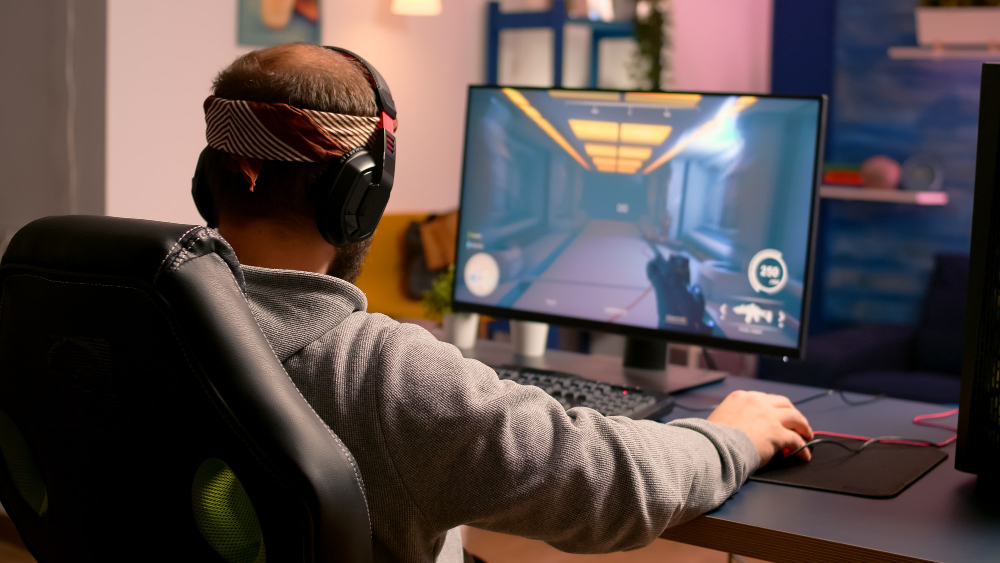Video game localization is the process of adapting a video game for global players. This can include translating the text and dialog into different languages, modifying the graphics to accommodate cultural differences, and tweaking the gameplay to make it more fun and engaging for players around the world.
The goal of localization is to create a gaming experience that feels native to each individual country, while still retaining the original feel and flavor of the game. It’s a challenging process, but it’s essential for ensuring that video games are enjoyed by as many people as possible. In this article, we’ll take a look at some of the challenges involved in video game localization and how they can be overcome.
Translated Text
One of the biggest challenges in video game localization is ensuring that the translated text makes sense in the new language. This is often difficult because video games often include a lot of slang and colloquialisms that don’t translate well. In addition, the text may need to be altered to make sense in the new language. For example, a game that refers to “left” and “right” might need to be changed to “port” and “starboard” for a pirating game set in the Caribbean.
Another challenge is ensuring that the text is properly localized for the target audience. This means taking into account things like age, gender, and cultural differences. For example, a game that is intended for a female audience might need to be changed to make it more appealing to women in different cultures.
Graphics
Graphics also pose a challenge for localization teams. Cultural differences need to be taken into account when localizing games. For example, a game that features characters with Western features might need to be changed for Chinese players. In addition, the color palette of the game might need to be tweaked to better reflect the culture of the target audience.
Gameplay
Gameplay is another area where localization teams need to be careful. Gameplay mechanics that are common in one region might not make sense in another. For example, a game that features driving on the left side of the road might need to be changed for countries where people drive on the right side of the road. In addition, certain gameplay elements might need to be removed or added to make the game more fun and engaging for global players.
The Characters
The character design is another area where localization teams need to be careful. The characters in the game should be designed in a way that makes them relatable to the target audience. In addition, the team needs to consider the cultural context of the game and make sure that the characters are appropriate for that culture.
For example, masked superheroes are popular in the United States, but they might not be appropriate for a game set in Japan. The team needs to consider the cultural context of the game and make sure that the characters are appropriate for that culture.
The story is another important aspect of localization. The story should be interesting and engaging for the target audience. In addition, the team needs to consider the cultural context of the game and make sure that the story is appropriate for that culture.
Are Video Games That Popular?
Yes, video games are extremely popular all over the world. In fact, they are so popular that they are now considered to be a mainstream form of entertainment.
A recent study found that people in the United States spend an average of six hours per week playing video games. This is more than people spend watching movies or TV.

The popularity of video games is growing all over the world. In China, the number of people playing video games has doubled in the last five years.
The popularity of video games is also growing in other countries, such as Japan, Korea, and Brazil.
Why Should You Localize Video Games?
There are a few reasons why you should localize video games.
Expanding Your Audience
The first reason is that it will help you reach a wider audience. When you localize a game, you are making it available to people who speak different languages. This means that you can reach people who might not have been able to play your game otherwise.
Increasing Revenue
Another reason to localize video games is that it can help you increase your revenue. A study by the European Commission found that localization can increase a game’s revenue by up to 200%.
This is because localized games are more likely to be bought and played by people in different countries.
Additionally, localized games are more likely to be reviewed positively by critics. This can lead to more people buying and playing your game.
Improved Quality
Localizing a game can also help improve its quality. This is because localization teams often find errors and bugs that need to be fixed.
In addition, localization teams often suggest ways to improve the game. For example, they might suggest changes to the gameplay or characters.

Creating a More Engaging Experience
Localization can also help you create a more engaging experience for your players. This is because localized games are designed to appeal to the specific cultural preferences of different regions.
For example, a game that is localized for China will be different than a game that is localized for the United States. The Chinese version of the game will be designed to appeal to Chinese players, while the American version will be designed to appeal to American players.
This means that localization can help you create a more unique and enjoyable experience for your players.
What Are The Steps in the Process?
There are a few steps that you need to take in order to successfully localize a game.
1. Research
The first step is to research your target market. This includes understanding the cultural preferences of your target audience.
You should also research the competition in your target market. This will help you understand what type of games are popular in that region.
2. Planning
The second step is to plan your localization strategy. This includes deciding which language(s) you want to target.
You should also decide how much text needs to be translated, and whether or not you need to hire a localization team.
3. Translation
The third step is to translate the game’s text into the target language. This is usually done by a localization team.
4. Testing
The fourth step is to test the game in the target market. This helps you ensure that the game is appropriate for that market, and that there are no errors or bugs.
5. Release
The final step is to release the game in the target market. This can be done through digital distribution platforms, such as Steam or App Store. Remember that you need to promote your game in the target market, in order to attract players.
Conclusion
Localization is essential for making video games enjoyable for players around the world. It’s a complex process that requires careful planning and execution. However, with the right team in place, localization can be a success.

